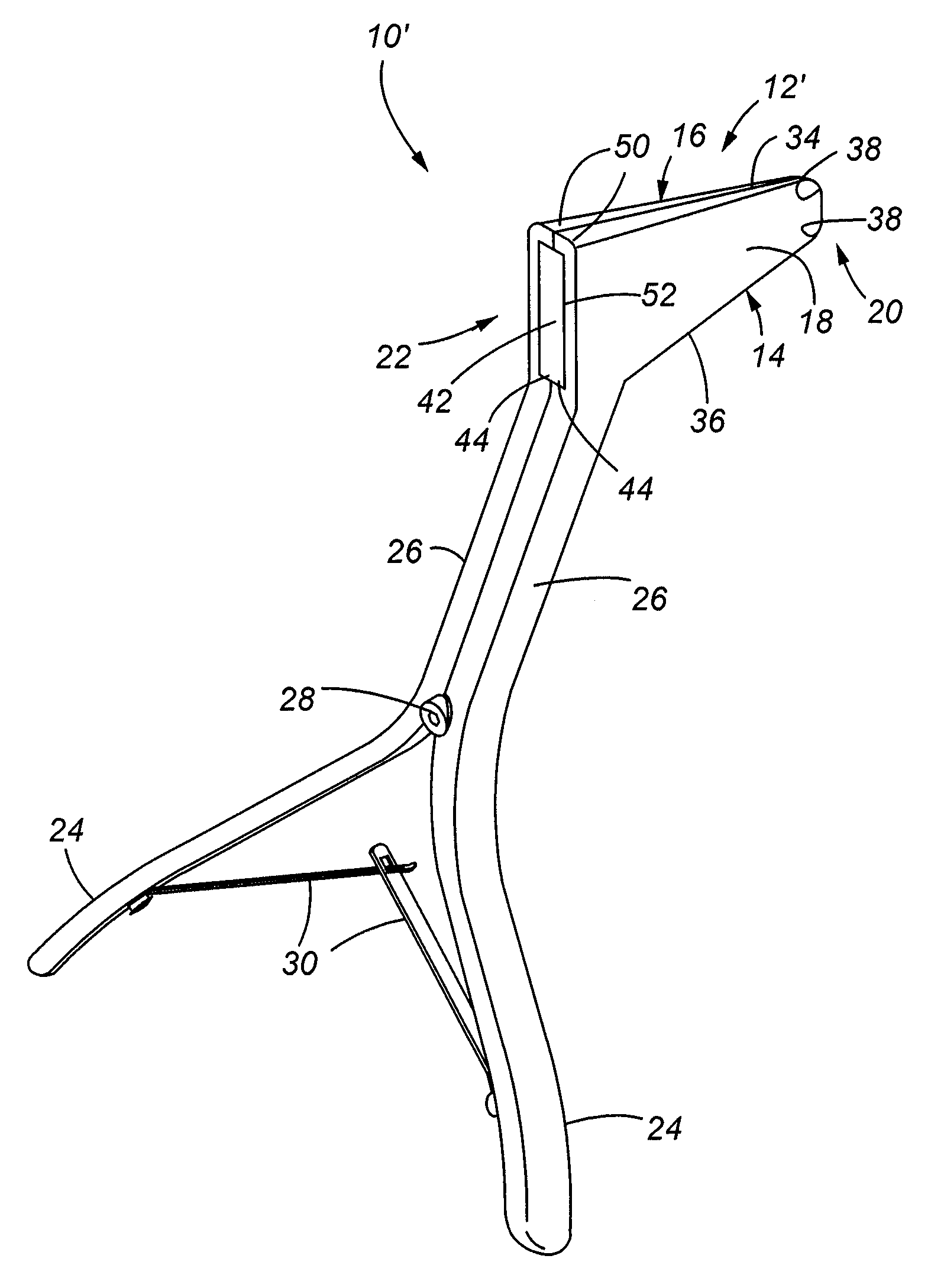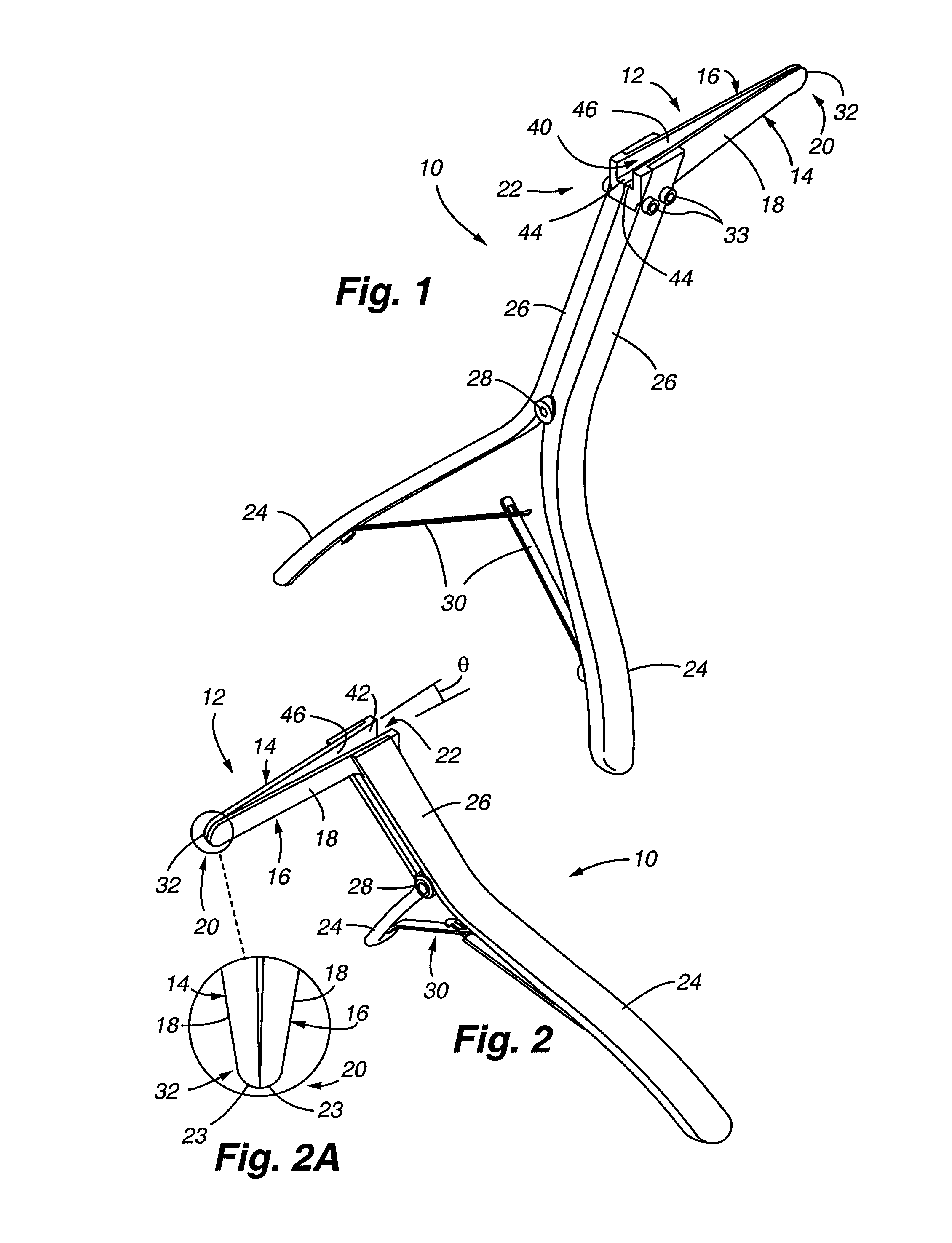Intermuscular guide for retractor insertion and method of use
a technology of intermuscular guide and retractor, which is applied in the field of surgical procedures, can solve the problems of difficult to get the retractor all the way down to the bony surface without, difficult to place such a retractor, and often difficult to not get one side out of the plane, so as to avoid affecting the muscle fibers during placemen
- Summary
- Abstract
- Description
- Claims
- Application Information
AI Technical Summary
Benefits of technology
Problems solved by technology
Method used
Image
Examples
Embodiment Construction
[0049]The guides of the present invention are intended to function generally with a retractor using one or more blades, for example, paired blades, where the retractor typically has some sort of curved surface or teeth at its distal portion. The teeth of the retractor are typically used to engage the undersurface of muscle or tissue to maintain retraction of those structures, and to minimize the risk of displacement of the retractor, and / or minimize the risk of displacement of the muscle or tissue from escaping retraction and falling back into the field of view.
[0050]Referring to FIGS. 1-9B, a retractor guide constructed in accordance with an embodiment of the present invention is generally identified by the reference numeral 10. As best seen in FIGS. 1 and 2, the retractor guide 10 includes a blade portion 12 comprising a first blade member 14 and a second blade member 16. First blade member 14 and second blade member 16 are generally apposed and are structures that are mirror imag...
PUM
 Login to View More
Login to View More Abstract
Description
Claims
Application Information
 Login to View More
Login to View More - R&D
- Intellectual Property
- Life Sciences
- Materials
- Tech Scout
- Unparalleled Data Quality
- Higher Quality Content
- 60% Fewer Hallucinations
Browse by: Latest US Patents, China's latest patents, Technical Efficacy Thesaurus, Application Domain, Technology Topic, Popular Technical Reports.
© 2025 PatSnap. All rights reserved.Legal|Privacy policy|Modern Slavery Act Transparency Statement|Sitemap|About US| Contact US: help@patsnap.com



